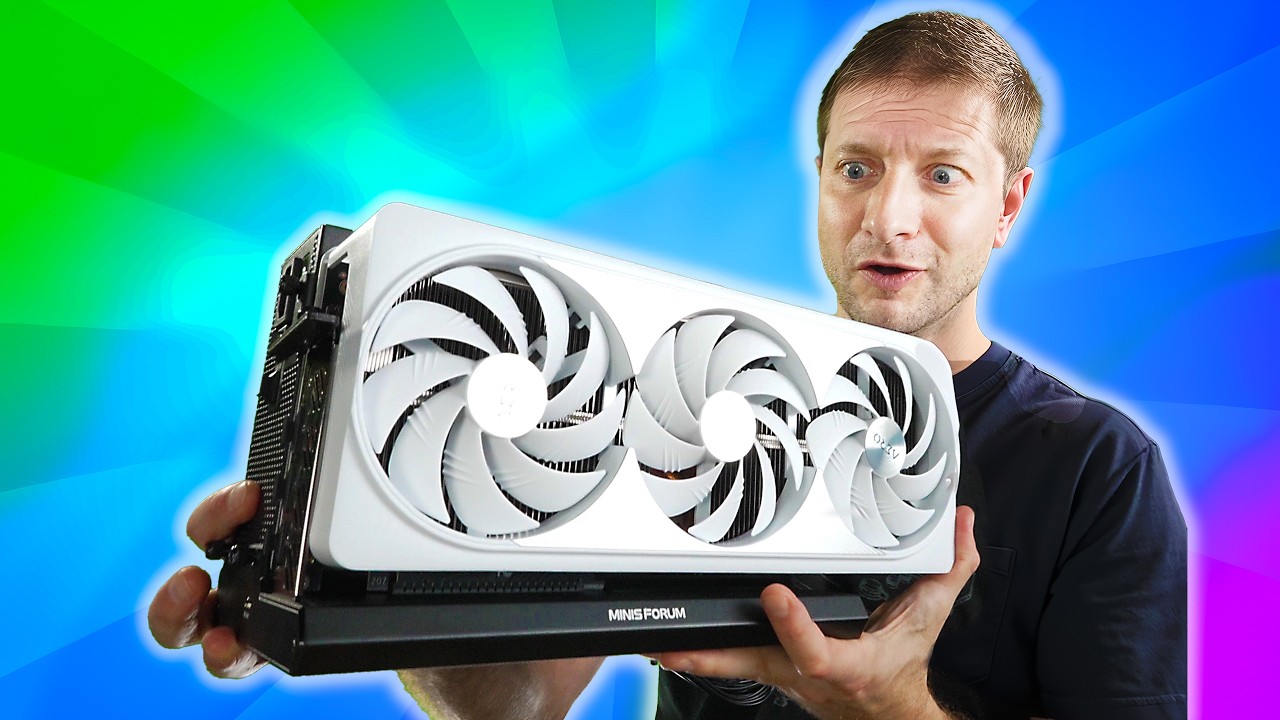In the video, the creator showcases their new high-performance LLM rig featuring an NVIDIA GeForce RTX 4090 and a Minis Forum D1 setup, highlighting the assembly process and initial performance checks. They express excitement about running local LLMs while acknowledging the limitations of the GPU’s 24GB VRAM for larger models, promising further benchmarks in future videos.
In the video, the creator showcases their new high-performance LLM (Large Language Model) rig, which features an NVIDIA GeForce RTX 4090 graphics card and a powerful 1200W power supply. The setup utilizes a Minis Forum D1, which connects the GPU externally via an Oculink interface, allowing for higher bandwidth than traditional Thunderbolt connections. The creator expresses excitement about running local LLMs on this powerful setup, marking a departure from previous experiments conducted on smaller machines.
As the creator unboxes the components, they highlight the impressive size of the RTX 4090 and the necessity of a robust power supply, even though the current project may not require all 1200W. They proceed to assemble the rig, connecting the GPU and power supply to the Minis Forum dock. Despite the complexity of the setup, the creator manages to connect everything correctly, ensuring that the power and data connections are properly established.
Once the hardware is assembled, the creator powers on the system for the first time. They navigate through the Windows setup and install the necessary drivers for the RTX 4090. The initial performance checks reveal that the GPU is recognized and functioning, with the creator noting the importance of managing VRAM when running large models. They discuss the limitations of the 24GB VRAM on the RTX 4090, indicating that larger models may require quantization to run effectively.
The creator then installs the necessary software, including Python and the CUDA toolkit, to facilitate GPU-accelerated applications. They also set up the AMA (AI Model Accelerator) tool, which allows for easy interaction with LLMs. After downloading the Llama 3.1 model, they test its performance, noting the impressive speed of the RTX 4090 as it processes requests. However, they also encounter issues when attempting to run larger models that exceed the GPU’s memory capacity.
In conclusion, the creator reflects on the performance of their new LLM rig, emphasizing the advantages of using the RTX 4090 for smaller models while acknowledging the limitations for larger ones. They express satisfaction with the setup’s ease of use and the automatic detection of the GPU by the AMA tool. The video serves as both a hardware showcase and a preliminary performance test, with the creator promising further benchmarks and explorations of AI models in future videos.
